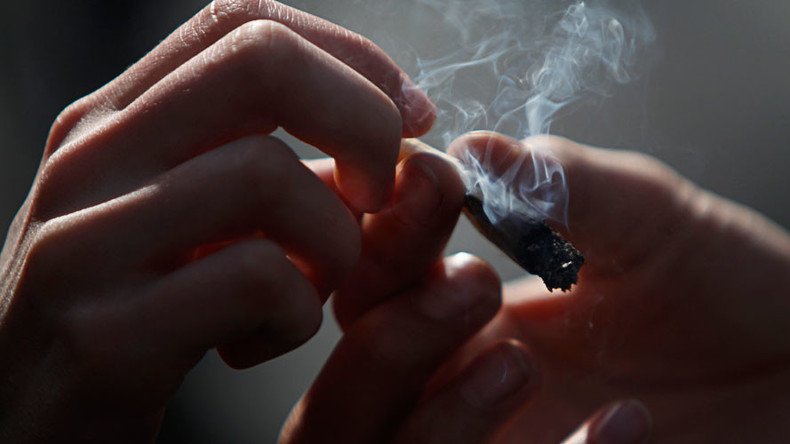Joint pain! Cannabis smokers twice as likely to break bones

Heavy cannabis smokers are twice as likely to suffer broken bones than people who use the drug moderately or not at all, new research has found.
Scientists at the University of Edinburgh’s Centre for Genomic and Experimental Medicine have discovered people who smoke cannabis frequently develop lower bone density as a result of using the drug, which means they are more likely to suffer fractures.
Researchers believe this could mean heavy smokers are at greater risk of developing osteoporosis in later life.
Man grows cannabis in Glastonbury flower displays for 18 yrs - only discovered by complaint https://t.co/cNgj286CRVpic.twitter.com/iNDy3870hQ
— RT UK (@RTUKnews) August 25, 2016
The study, funded by Arthritis Research UK, defined heavy cannabis users as people who smoke the drug on 5,000 or more occasions in their lifetime.
The average heavy user who took part in the study had smoked cannabis more than 47,000 times, while the moderate users had smoked the drug an average of 1,000 times.
“We have known for a while that the components of cannabis can affect bone cell function, but we had no idea up until now of what this might mean to people who use cannabis on a regular basis,” lead research Professor Stuart Ralston said.
“Our research has shown that heavy users of cannabis have quite a large reduction in bone density compared with non-users and there is a real concern that this may put them at increased risk of developing osteoporosis and fractures later in life.”
Cannabis vaporizer being tested by NHS could lead to 'properly regulated UK market' https://t.co/uAZimKgewHpic.twitter.com/j7qhDCvqJZ
— RT UK (@RTUKnews) August 15, 2016
The team used a special X-ray technique called a DEXA scan to measure the bone density of 170 regular users and 114 non-users who took part in the study.
Researchers also made the surprising discovery that, contrary to popular belief, frequent and long-term cannabis use may actually reduce appetite.
They found that heavy smokers had lower body weight and BMI than non-users.












